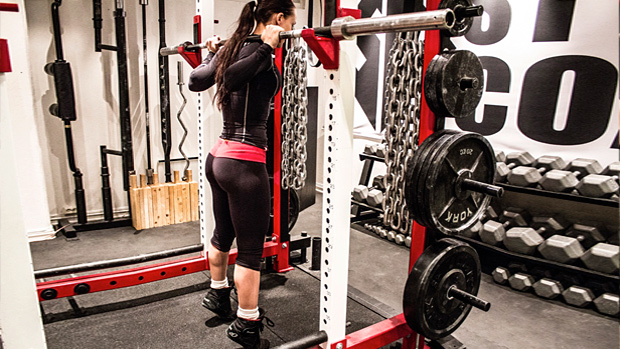We've all heard this before:
"Sprinters are leaner and more muscular than marathon runners. That's why high intensity intervals are better than steady state cardio."
I admit that when I started out as a trainer I used that analogy too, even though I never fully bought into it. Now I know it's downright false.
First, all elite sprinters have over 90 percent fast-twitch muscle fibers, which indicate an ACTN3 RR profile. Without going too deep into genetics, ACTN3 is the gene that determines your muscle type as well as your muscle's response to training.
The ACTN3 profile, which is only found in about 10 percent of the population, has a very high ratio of fast twitch fibers. Remember, fast twitch fibers have a much greater growth potential, a greater mTOR response to training (which means more protein synthesis) and a faster rate of muscle damage repair, which will also lead to more growth.
Elite endurance athletes – those who are used in the comparison to elite sprinters – are very slow-twitch dominant. That's indicative of an ACTN3 XX profile, found in 10-15 percent of the population.
This is the "endurance" muscle profile: more slow twitch fibers (less growth potential), lower mTOR and greater AMPK (bad for muscle-building, good for endurance), a slower rate of muscle repair but a higher max VO2 and fat utilization capacity.
Simply put, those who reach a high level in sprinting have the genetics to be fast, powerful, strong, and muscular to begin with. Those who excel in endurance sports are the opposite.
Also, sprinters do a ton of heavy lifting. Heavy benches, squats, power cleans, deadlifts, etc. These guys put up pretty impressive numbers. Most elite sprinters squat in the 500 and bench press in the mid-300 pound range. Some of them squat in the 600's and bench in the 400's. Not world-class powerlifting numbers, but strong enough to have built a ton of muscle tissue along the way.
Have you ever seen an endurance athlete lift weights? Me neither! Well, in all seriousness, I have. And except for a few smart exceptions they all do BOSU ball exercises, curl-lunges combos, and quarter squats, all in the 15-25 rep range "to work on endurance." And they don't train hard or push themselves.
They don't have great muscle-building genetics to start with, and they don't do anything to stimulate muscle growth. Sprinters lift heavy; marathon runners don't. Is it that surprising that one is more muscular than the other?

Do you know what sprinters DON'T do? Intervals! Sprinters don't do intervals in their training, yet their bodies are used to "prove" that intervals are better at giving you a lean and muscular physique. See the problem there?
I've trained sprinters, I've trained with a track and field coach, I've collaborated with Charlie Francis (Ben Johnson's former coach), I train bobsled athletes (who train like sprinters) and I've never ever seen intervals being used.
A typical training session for a 100m sprinter will consist of 4-6 sprints (30-100m depending on the phase) with more than ample rest between sets – as long as 10 minutes between sprints. A good track coach would never have a sprinter do intervals. It would kill his CNS and destroy his sprinting mechanics.
Sprint training is all about quality. And to have the highest possible quality they avoid fatigue accumulation. You want to be as fresh as possible for each sprint. This is the opposite of intervals, where you want to build up a large amount of lactic acid and fatigue.
You know who does plenty of intervals? Endurance athletes! It's part of their weekly routine, and for many of them it's the primary training method.
So let me get this straight. I'm going to use a sprinter's physique to prove the superiority of intervals (even though they don't do any) over steady state cardio by comparing them to endurance athletes who actually do intervals. Isn't that messed up?
I'm not saying that endurance training isn't without its problems. Endurance performance training will make it harder to build muscle – first by creating a large caloric deficit, then by inhibiting mTOR, and also by overproducing cortisol. But doing 30 minutes of steady state cardio 2-4 times a week isn't endurance training.
You can't look at an athlete who does hours of endurance work at a fast pace and believe that it's even remotely correlated to doing 30 minutes of slow cardio a few times a week. The two aren't even in the same ballpark.
Yes, excessive endurance training will jack up cortisol. But if you compare the cardio being done in gyms with intervals, the intervals will actually spike cortisol even more – cortisol release is relative to the amount of fuel being mobilized and adrenaline being released. Both are higher with interval work.
I'm not saying that intervals are crap or that steady-state cardio is king. Both can be useful if used properly and in the right dose. But the sprinter vs. marathon runner thing is simply dumb and intellectually dishonest.





